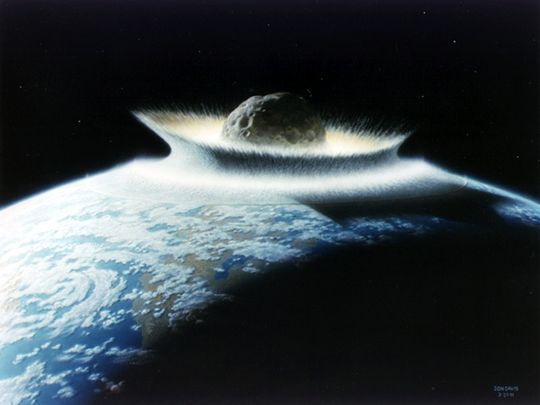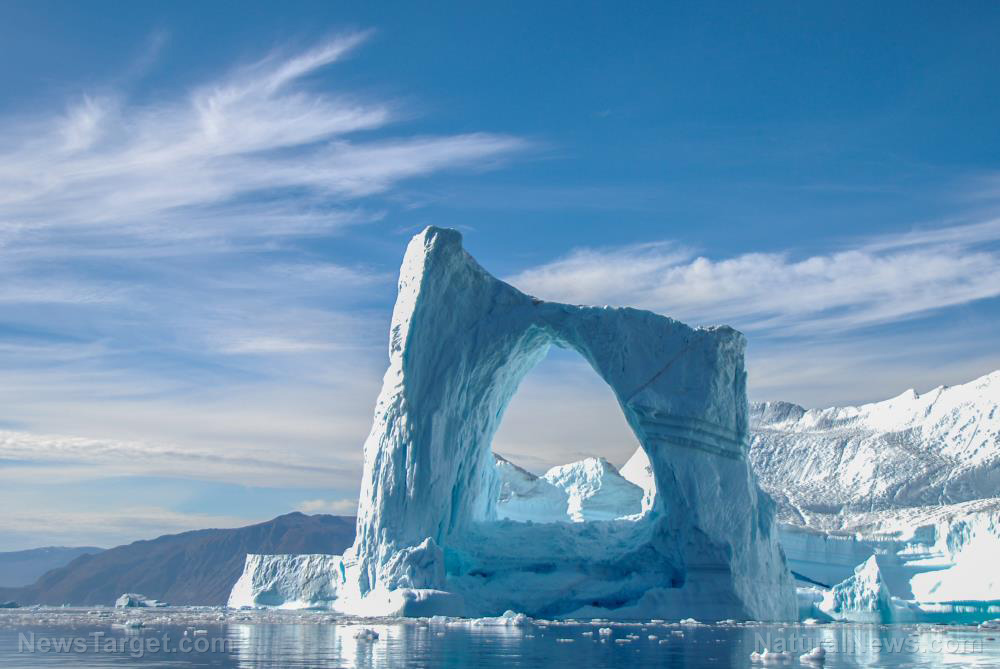Arctic Ocean is a “climate bomb” that may plunge the North Atlantic into a cooler climate
10/08/2020 / By Virgilio Marin

Rising temperatures may soon plunge the North Atlantic region into a cooler climate. According to climate scientists, the cooling event will heavily depend on the Beaufort Gyre, a major ocean current in the Arctic Ocean that’s been swirling pent-up ice and freshwater far longer than normal. Once it lets up, experts say that it might trigger a “ticking climate bomb.”
Beaufort is driven by winds that push it into a clockwise direction. Since the latter half of the 20th century, the current switches into a counter-clockwise circulation every five to seven years. This releases years-worth of icy freshwater accumulated from melting ice caps, river runoff and precipitation into the North Atlantic Ocean, affecting the climate in various areas around the region.
However, scientists have observed that Beaufort has been “stuck” in a clockwise movement for far longer than usual. Since the 1990s, the gyre has accumulated about 1,920 cubic miles of freshwater, or almost twice the volume of Lake Michigan, according to the National Aeronautics and Space Administration (NASA).
Rising temperatures propel Beaufort’s clockwise swirl
Studies attempting to pin down what’s causing Beaufort’s strange behavior indicate that rising temperatures may have a prominent role. A NASA-funded study suggests that melting sea ice has left the gyre more exposed to the wind, spinning it faster and keeping it perpetually stuck in its clockwise motion, effectively trapping enormous amounts of fresh water.
Meanwhile, another study has found that frigid fresh water pouring into the North Atlantic from the rapidly melting Greenland ice sheet is forming an ice cap on the ocean. As a result, heat from the Gulf Stream’s northern end in Western Europe cannot rise to the surface, potentially inhibiting the formation of cyclones that can cause the gyre’s present motion to weaken or temporarily reverse, something that researchers have been expecting since 2003.
If Beaufort keeps up with its anticyclonic direction, it will accumulate more fresh water until it finally pours that water into the North Atlantic, potentially triggering a widespread cooling effect that will affect multiple countries in the northern hemisphere. (Related: Global warming actually decreases storm activity, says science paper.)
Cooler climate in the North Atlantic as Beaufort lets up
Andrey Proshutinsky, a polar oceanographer at the Woods Hole Oceanographic Institution, has called this surge of water a “ticking climate bomb.” Proshutinsky, who co-authored the study on Greenland’s melting ice sheet, noted that just a five percent flush of that growing freshwater reservoir could temporarily cool the climate of Iceland and northern Europe, as well as inflict major hits on commercial fisheries in the North Atlantic.
Other experts are also sounding the alarm. Tom Armitage, the lead author of the NASA-funded study and a polar scientist at the agency’s Jet Propulsion Laboratory, said, “If the Beaufort Gyre were to release the excess freshwater into the Atlantic Ocean, it could potentially slow down its circulation. And that would have hemisphere-wide implications for the climate, especially in Western Europe.”
Armitage’s co-researcher, Alek Petty, added that the Gulf Stream would be significantly affected. The ocean current brings warm water from the Gulf of Mexico to Florida all the way to Western Europe. “We don’t expect a shutting down of the Gulf Stream, but we do expect impacts,” said Petty, a polar scientist at NASA’s Goddard Space Flight Center. (Related: Satellite data proves Earth has not been warming the past 18 years – it’s stable.)
A similar event, called the Great Salinity Anomaly, previously occurred from the late 1960s to the 1970s. A surge of water out of the Arctic Ocean freshened and cooled the North Atlantic’s top half-mile. Experts described it as one of the most persistent and extreme variations in the global ocean climate in the past century, cooling Northern Europe dramatically and disrupting the North Atlantic food chain.
With rising temperatures abetting Beaufort’s clockwise swirl, a repeat scenario may not be so unlikely.
ClimateScienceNews.com has more on the cooling effect of rising temperatures.
Sources include:
Tagged Under: arctic ocean, Beaufort Gyre, Climate, climate science, Cooling effect, Gulf Stream, melting ice sheet, NASA, North Atlantic Ocean, ocean climate, ocean currents, Oceans, rising temperatures



















